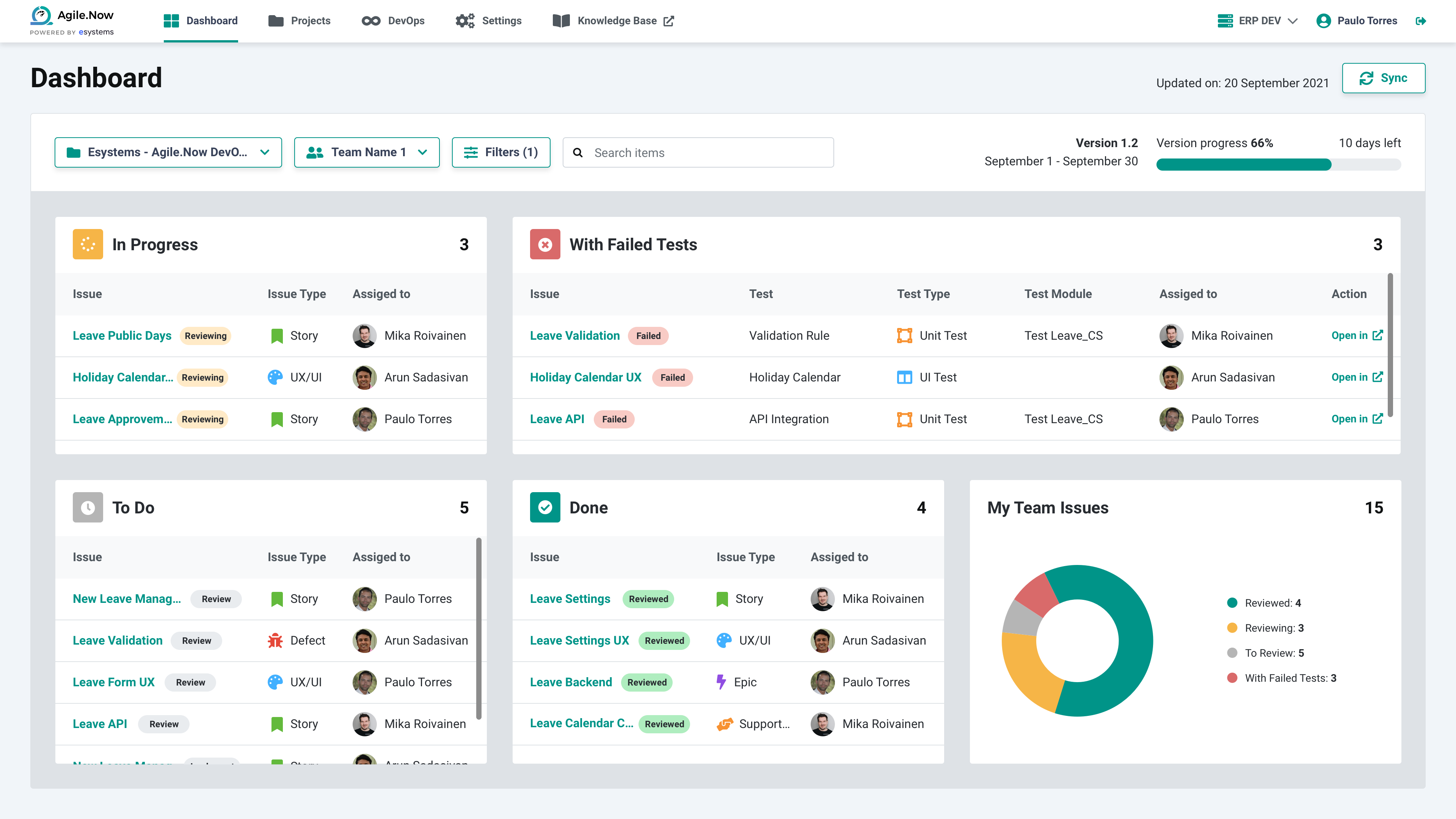- 25 Sep 2023
- 4 Minutes to read
- Print
- DarkLight
Introduction
- Updated on 25 Sep 2023
- 4 Minutes to read
- Print
- DarkLight
Thousands of customers use OutSystems' low-code platform to develop applications following an agile method. In a simple project, the developer usually works alone, releasing the results independently, while in complex projects the team has professionals who perform certain tasks in the process. In either of these situations, tools are used to support project management, design, test, application distribution, metric analysis, and other functions.
In practice, what we discussed above means using multiple tools that do not communicate with each other, and thereby introducing a possibility to manually assign repeatable tasks at all stages of the project. Therefore, one of the key problems is that the low-code developers need an operating model that can combine all the different tools throughout the application's development lifecycle.
We are definitely seeing the impact of low-code on development environments and DevOps. Remember, low-code started with small applications, and while DevOps-style teamwork and workflows may not be needed there, as the use of low-code platforms becomes the norm for critical enterprise projects, DevOps will be a necessary part of the mix. This is where low-code is having a more obvious impact; Agile methodologies using low code platforms for iteration, for continuous improvement and for continuous delivery. These applications aren’t a one-and-done. They need to be maintained, improved and delivered, again and again.
OutSystems low-code tools are a double-edged sword. They facilitate teamwork, but issues with security and data governance may not be on top of mind for developers. If you have a big team working on automation and/or application development and delivery, the need for built-in governance becomes even more important.
Deployment pipelines help enterprise Low-code teams build an efficient and reusable process by maintaining development, test, and production environments. Application developers can incrementally transition new or updated applications between environments, reconfiguring them with the appropriate functionality, data connections and permissions.
Agile.Now Factory pipelines are very easy to use and take only few minutes to setup. No previous expertise or coding skills required.
Problems faced by low-code projects
- In general, low-code projects lack a good foundation, which prevents them from scaling effectively for future development and the project team is unable to create reusable components and libraries.
- Monitoring the status of the issues is a complicated process because most of the time the application development team is disconnected from the project management team and therefore there is no communication as to what has been done, who did it, when and in which version a feature/fix was implemented.
- There is hardly any automation testing, and in most cases the testing is carried out occasionally and manually, which leads to serious quality problems. In most cases, automation testing is done using Selenium software and test cases are encoded with Java.
- Usually, its seen that after the first version of the project is completed, the quality of further deliveries starts to deteriorate sharply. For example, someone in the team changes a part of the application, and automation testing is either missed or minimal. As a result of this, we can't detect changes and scopes automatically. This mishap with limited manual testing can cause serious errors in the application, which piles up and only becomes known once a new version has been released to production.
- There is a difficulty in incorporating the standard CI/CD processes into the development workflow because there are no commonly available models available in low code development that can be easily absorbed and implemented by the project teams.
- In addition, it is not possible to validate all parameters in the database and applications, which can lead to security and data issues.
What does Agile.Now Factory solve?
- The purpose of the Agile.Now Factory software is to streamline the development of OutSystems applications from project definition, design, programming and testing to project production and export.
- Agile.Now Factory integrates with the low code tools of OutSystems that you are already using, bringing full seamless communication and visibility into the space
- Agile.Now Factory fully automates the application development process.

Fig: Agile.Now Dashboard
Agile.Now Factory helps you
- By introducing a process that connects people, ideas and technology into a single entity that delivers results quickly.
- Achieve all the benefits of agile development and save yourself from the most common problems in agile development using low-code development methodology.
- To use an existing project management application of your choice like Jira or Azure DevOps and make the most of it.
- By bringing continuous integration and delivery to the OutSystems factory without hundreds of hours of work.
- To remove supplier locks, human bonding and manage business risks.
- To create reusable digital asset.
- To increase the quality of deliveries and speed up the application development process and save time, resources, and money.
- Improve the communication between the teams. The implementation of the Factory approach presupposes that developers, QA engineers and system administrators now work in the alignment with each other. The ongoing communication between the Factory practitioners allows preparing and delivering new software pieces to production faster and with a decreased number of bugs missed.
- With the increased amount of test automation. Continuous testing is one of the key components of the Factory approach. To achieve it, testing is automated with the use of specialized tools, e.g., Ghost Inspector, and Tricentis Tosca that are designed to automatically perform various types of tests (such as unit, functional, integration testing) and promptly notify the Factory practitioners on detected bugs.


